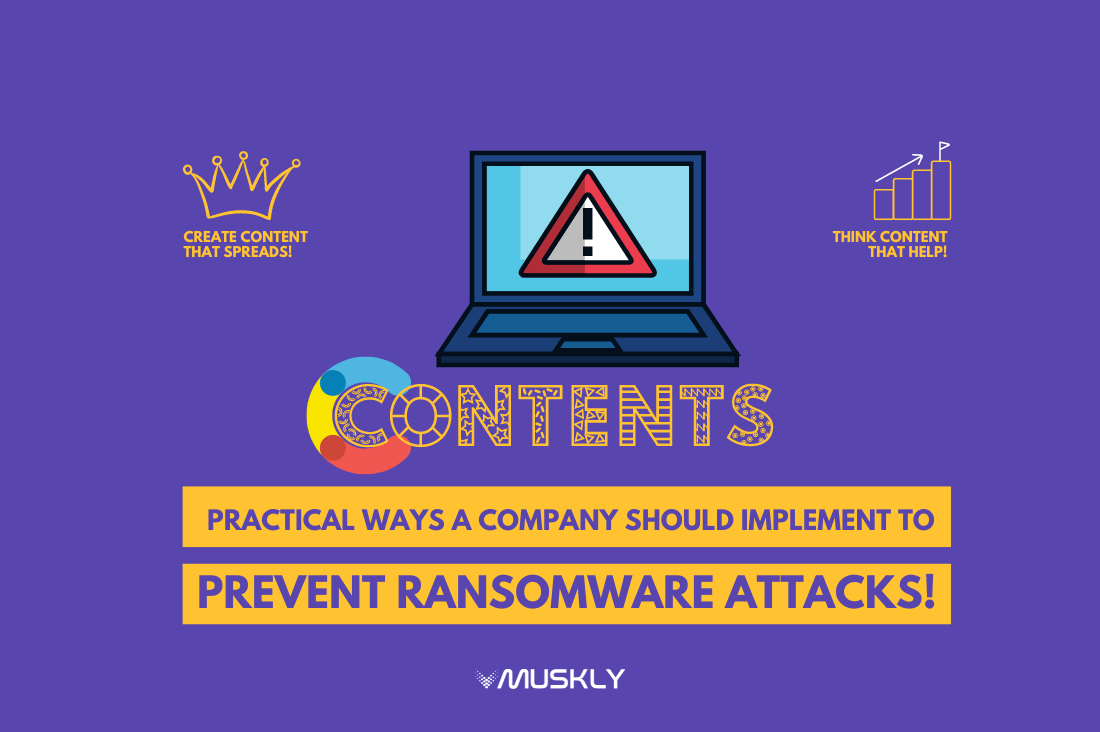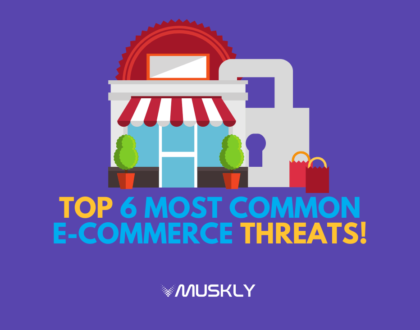Practical Ways a Company Should Implement to Prevent Ransomware Attacks!

by MUSKLY
Ransomware attacks can be a big pain behind, so a company should implement several security measures to protect itself. These measures include strong malware protection, firewalls, and spam filters. Although antivirus solutions are effective, they cannot block every network threat; therefore, a multi-layered approach is recommended.
Moving Target Defense (MTD) Strategy
Moving target defense (MTD) is an effective cyber security strategy for preventing ransomware attacks. Combined with other defenses, it can protect organizations from thousands of daily attacks. Transforming a computer’s attack surface into a dynamic one significantly reduces the cost and difficulty of mounting attacks. In addition, it offers continuous vulnerability visibility and management. Moving target defense focuses on operating system vulnerabilities, which are particularly problematic for attackers. Zero-day vulnerabilities are of particular concern. Moving target defense platforms can enhance a system’s resilience by forcing attackers to behave in ways that are counterproductive to their goals. Furthermore, it provides proactive protection against zero-day exploits and protects against vulnerabilities in client-server applications.
File-Level Encryption
One of the most effective ways a company can do on how to prevent ransomware is by using an antivirus program. Antivirus programs are helpful because they provide a baseline level of protection against most established ransomware threats. Businesses should also implement endpoint detection and response tools and multi-factor authentication. These steps can help protect vital resources and reduce the risk of a ransomware attack.
Regardless of the type of ransomware a company faces, the most important thing to do is protect its data. Ransomware uses encryption to lock up files and then demands a ransom to recover the data. Traditionally, ransom demands were made via PayPal and were usually made through spam emails. These days, however, hackers are increasingly using Bitcoin for this purpose. Furthermore, a company should implement a cloud storage solution to reduce attack risk. Another effective way to protect against ransomware attacks is through education. Businesses will be better equipped to fend off such attacks by training employees to identify and avoid phishing emails. Some businesses conduct security seminars quarterly, covering ransomware, phishing, and social engineering scams.
GPO Restrictions
One way to prevent ransomware attacks is to use GPO restrictions. These security settings allow administrators to block rogue processes from accessing the network. This feature can prevent ransomware from installing on your network and encrypting your files. In addition, it can help you keep your network secure by implementing account lockout policies and guest networks. You should also segregate your network into different zones to minimize the risk of ransomware infection. Another way to prevent ransomware attacks is by restricting administrator privileges. This is critical because most ransomware uses permissions based on the current user’s permission level. As a result, users should never have administrator privileges on their systems.
Incident Response Plan
Having an incident response plan for ransomware attacks is crucial to protecting your business from this type of attack. Effective ransomware incident response requires coordination among multiple teams and individuals. Each team member must understand their roles and responsibilities and have a transparent chain of command. The first step in a ransomware incident response plan is determining how to contain the attack. It is important to determine the first entry point, whether that is a single system or the entire network. The infection can be removed or contained if it is limited to a single system. However, if the infection spreads to multiple systems, it may result in further damage. Therefore, an incident response plan for ransomware attacks should include a detailed forensic analysis of all affected systems.
Recommended Posts

Top 6 Most Common E-commerce Threats in 2020!
April 1, 2020

5 Key Reasons Why PR is Crucial in the AI Era!
April 20, 2024





